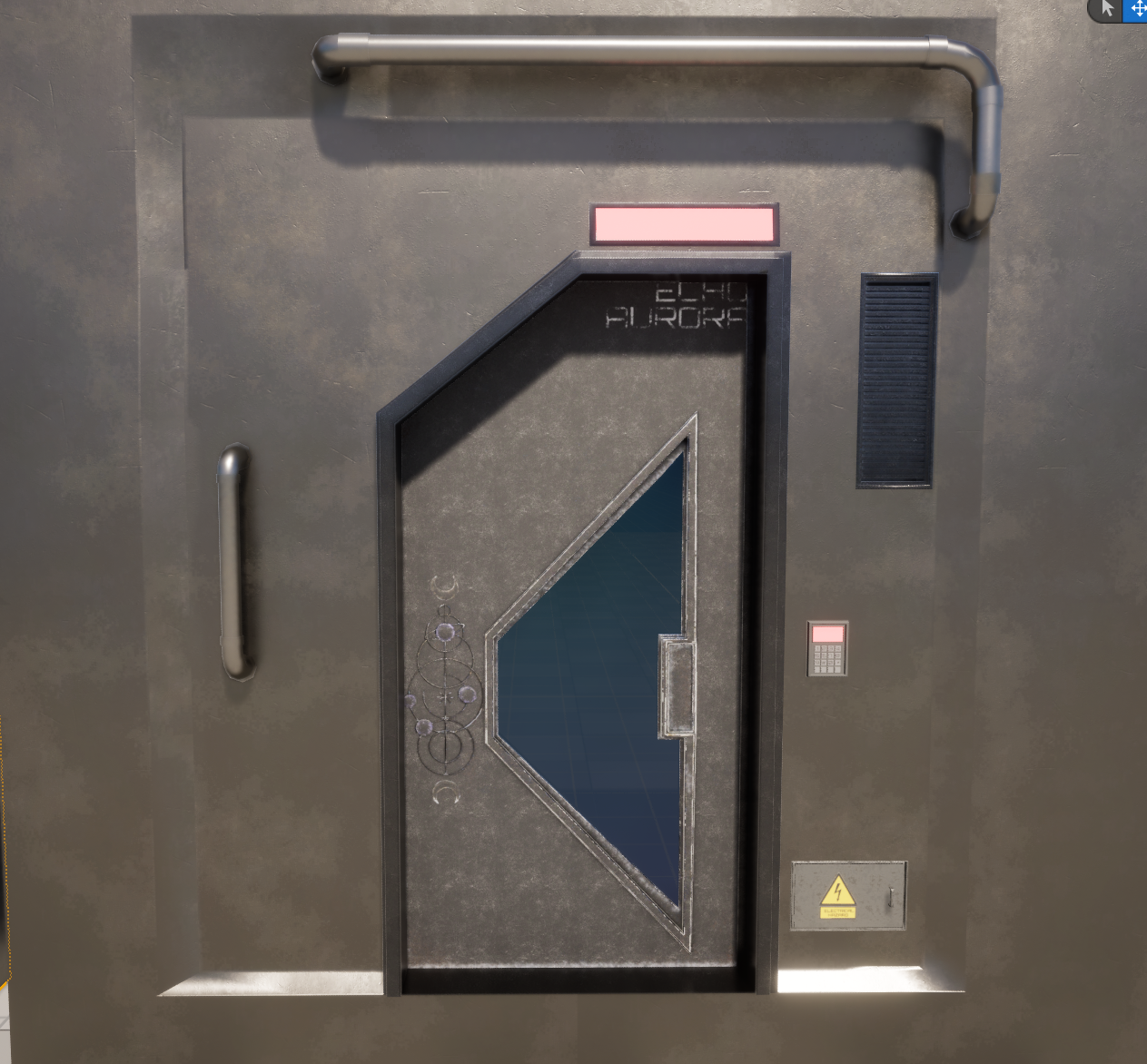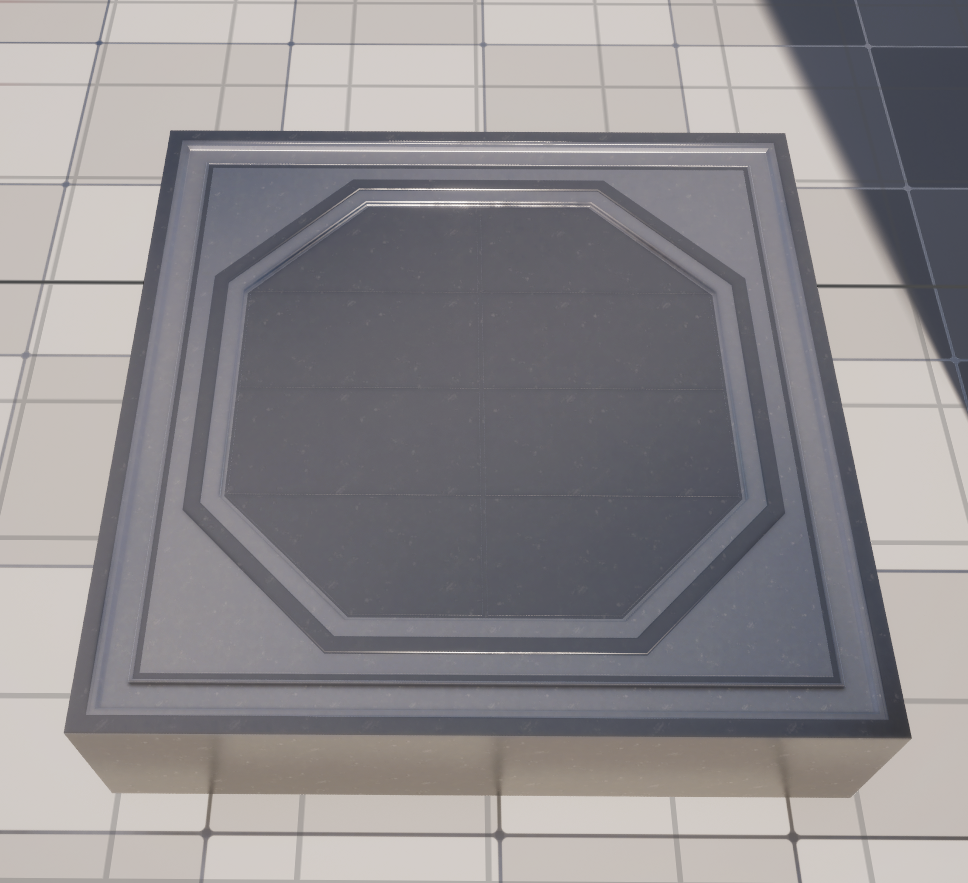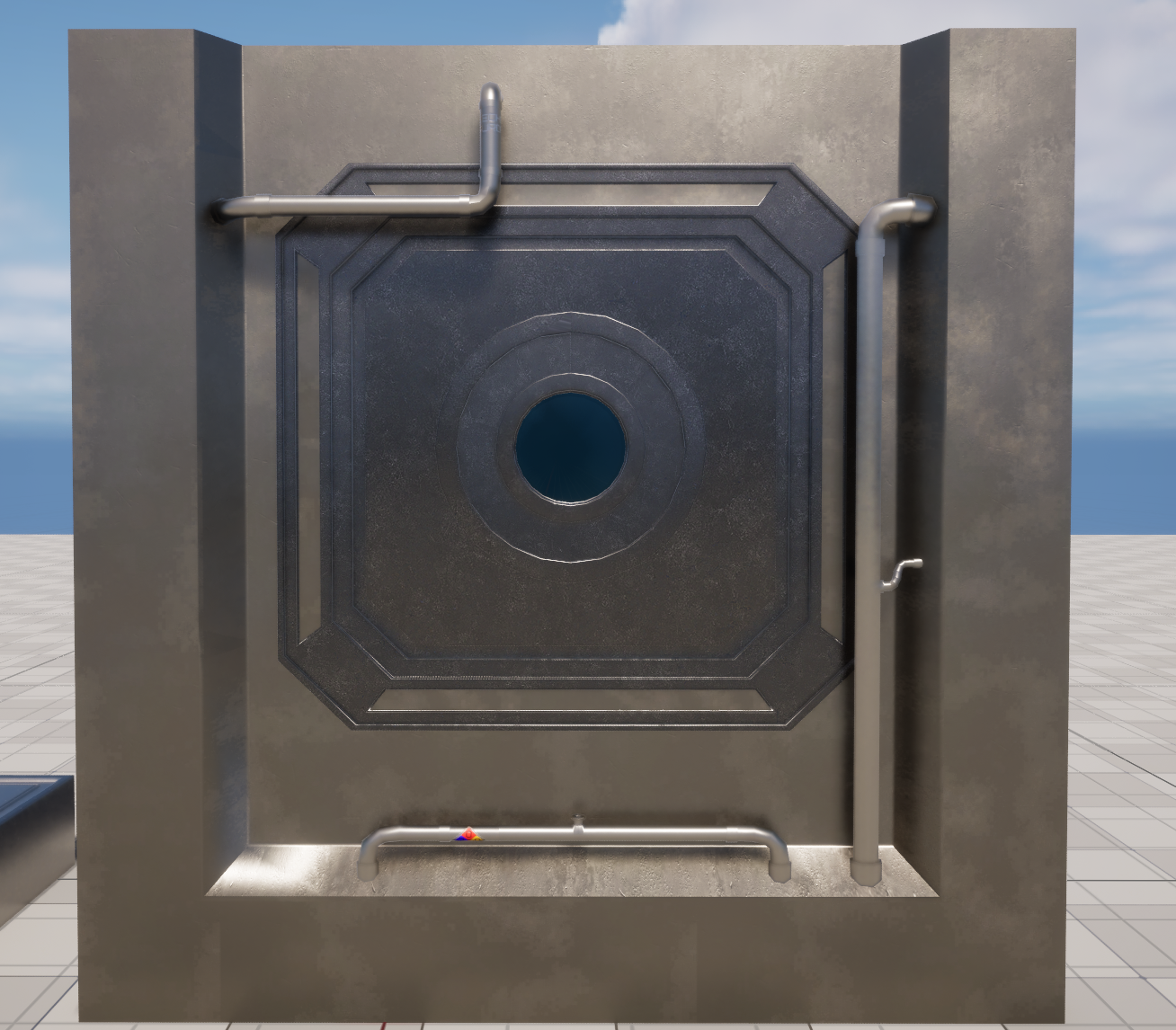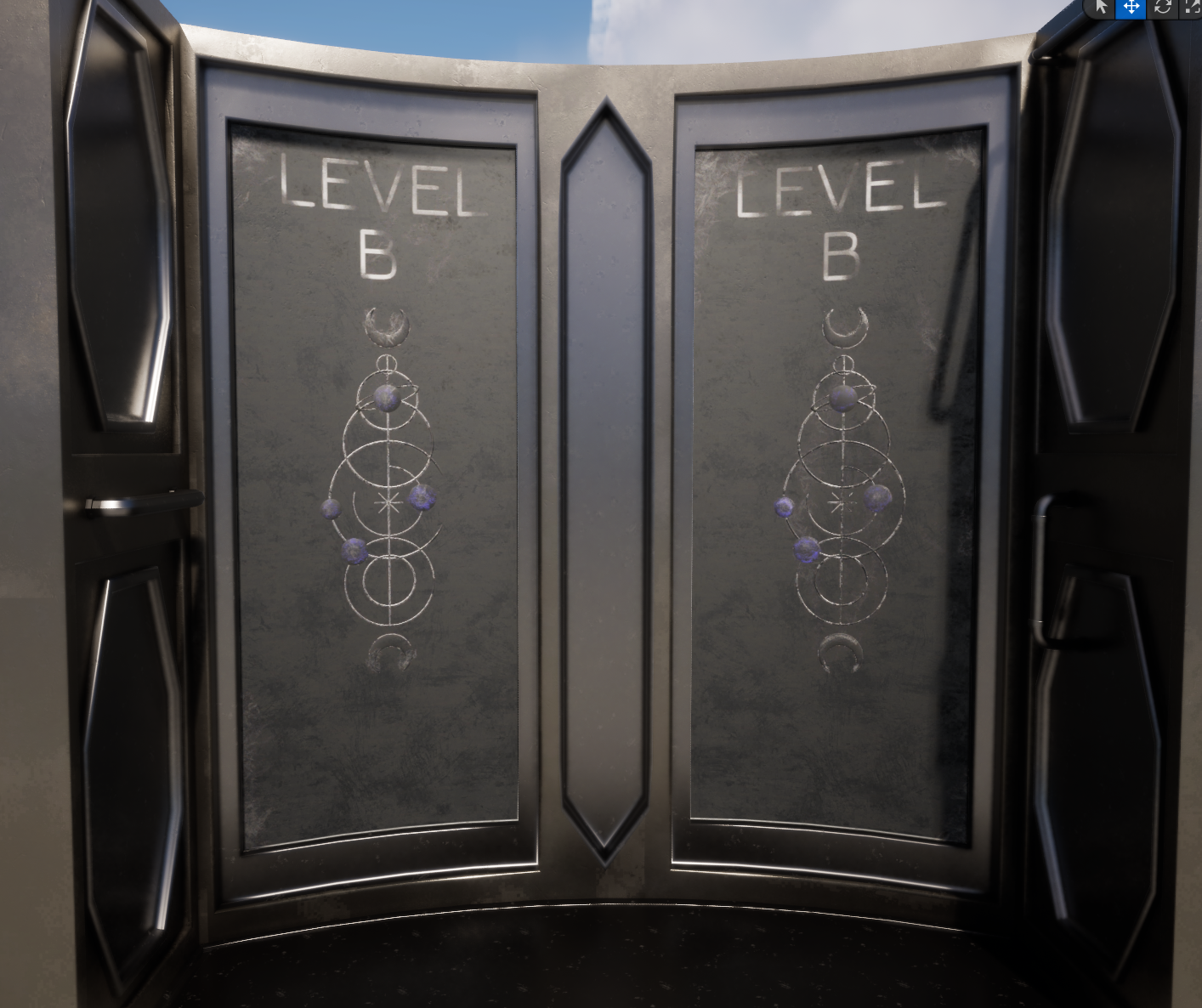Cinematic V/O and Finalizing Materials
This sprint was all about implementing voiceover and finalizing cinematic timing. I recorded all V/O for my Adventure Game and integrated it into both the intro and outro cutscenes. Syncing the audio with character animation and camera movement in Unreal required multiple passes, but the final result is smooth and on-theme. Having fully voiced sequences now adds a lot to the immersion and narrative delivery.
Visually, I focused on refining materials and applying final detail maps. Using my tiling texture set, I layered in subtle albedo and normal variations for realism. I also tweaked emissive values for sci-fi assets like terminals and doors to draw player attention. Several sculpted pieces from ZBrush were baked down and integrated into the scene, offering some one-off assets that break up repetition from modular pieces.
With voiceover and materials nearly complete, I turned attention to lighting optimization. I began comparing raytraced and non-raytraced setups to find a balance between quality and performance. This involved lightmap adjustments and checking texel density across key assets. Performance testing has become more important as the environment fills out, especially when particle systems and animated elements are active during cutscenes.



